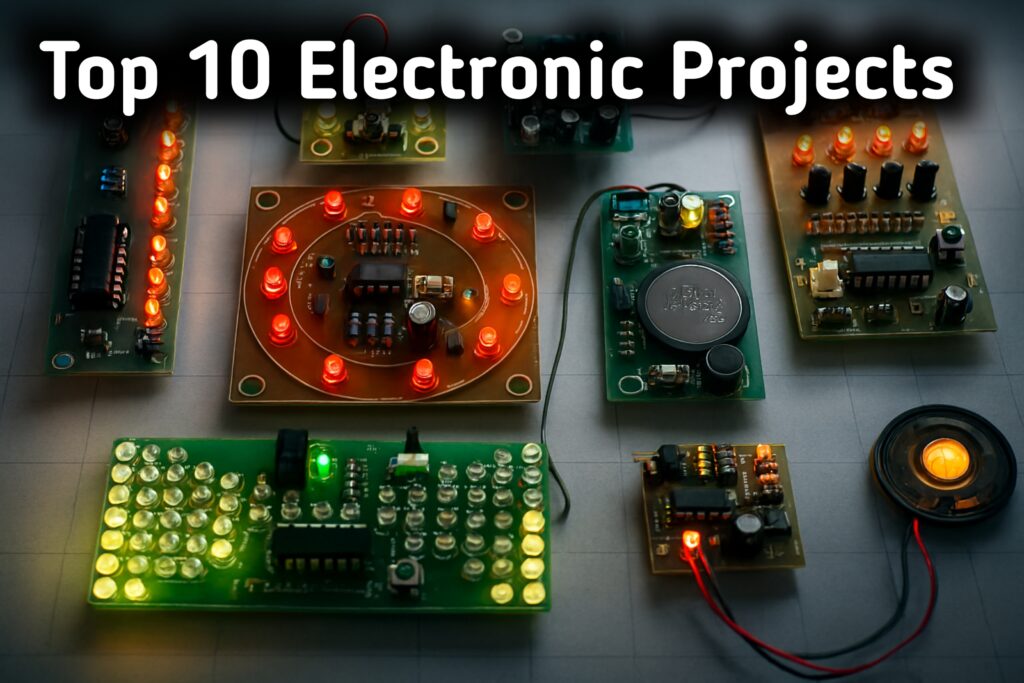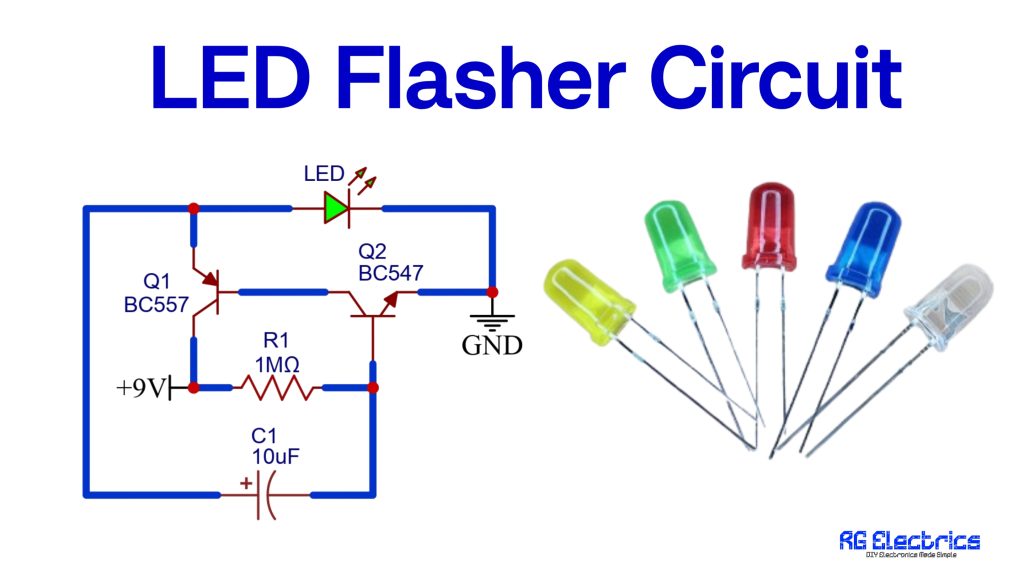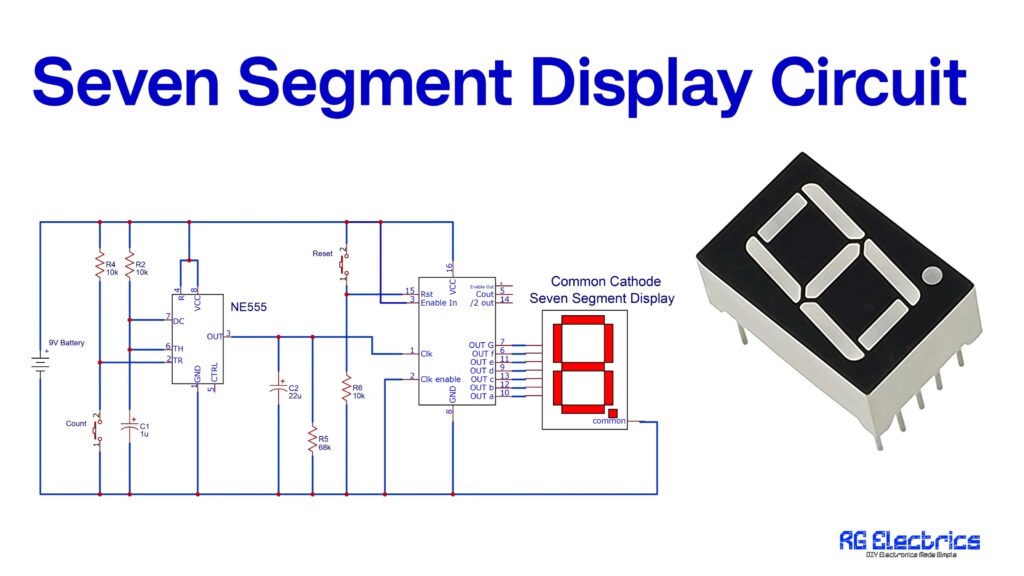Table of Contents
Introduction:
The TDA7266 is a compact dual-bridge amplifier IC designed for audio applications, particularly in driving stereo speakers with low power consumption. Widely used in low-power audio systems, this amplifier offers excellent sound quality with minimal distortion, making it ideal for home audio systems, computer speakers, and portable audio devices.
The IC operates on a single supply voltage, typically ranging from 4.5V to 18V, making it suitable for battery-powered applications. Its simple design includes built-in standby and mute functions, allowing for energy-efficient operation and noise suppression when the amplifier is not in use. The use of coupling capacitors at the input stages blocks DC components, ensuring that only the desired audio signal is amplified. Additionally, power supply capacitors help to stabilize the voltage and reduce noise, contributing to clearer sound output.
The TDA7266 is known for its thermal and short-circuit protection features, making it a robust choice for audio systems that require reliability. In typical configurations, each channel drives a separate speaker, providing a balanced stereo output. This versatile IC is an excellent choice for engineers and hobbyists looking for a cost-effective solution for low-to-medium power audio amplification.
Component Details:
| S.No | Components | Value | Qty. |
|---|---|---|---|
| 1. | IC | TDA7266 | 1 |
| 2. | Resistor | 10K | 2 |
| 3. | Capacitor | 470uf, 10uf, 1uf, 100nf, 0.22uf | 1,1,1,1,2 |
| 4. | Speaker | – | 2 |
| 5. | Power Supply | 12V | – |
| 6. | Audio Input | – | – |
TDA7266 Features and Pinout:
The TDA7266 audio amplifier offers several key features that make it ideal for low-power stereo applications:
- Dual Bridge Amplifier: Drives two speakers in a bridge-tied load (BTL) configuration for higher output power without needing a large heatsink.
- Wide Supply Voltage Range: Operates on a single supply voltage from 4.5V to 18V, making it versatile for different power sources, including battery-powered devices.
- Low Distortion: Delivers high-quality audio with low Total Harmonic Distortion (THD), ensuring clear sound reproduction.
- Standby and Mute Functions: Allows control over power consumption and noise reduction. Standby minimizes power when the amplifier is not in use, while mute prevents audible pops during transitions.
- Thermal Shutdown: Includes automatic thermal protection to prevent overheating, enhancing the reliability and longevity of the IC.
- Short-Circuit Protection: Protects the amplifier from damage in case of accidental speaker or wiring shorts.
- Few External Components: Requires minimal external components, simplifying the circuit design and reducing overall cost.
- Compact Package: Available in small IC packages, making it suitable for compact audio systems where space is limited.

Pinout:
- OUT1+ (Pin 1): Positive output for channel 1.
- OUT1- (Pin 2): Negative output for channel 1.
- Vcc (Pin 3): Power supply input (positive voltage).
- IN1 (Pin 4): Audio input for channel 1.
- N.C. (Pin 5): No connection (not used).
- MUTE (Pin 6): Mute control pin.
- ST-BY (Pin 7): Standby control pin.
- PW-GND (Pin 8): Power ground.
- S-GND (Pin 9): Signal ground.
- N.C. (Pin 10): No connection (not used).
- N.C. (Pin 11): No connection (not used).
- IN2 (Pin 12): Audio input for channel 2.
- Vcc (Pin 13): Power supply input (positive voltage).
- OUT2- (Pin 14): Negative output for channel 2.
- OUT2+ (Pin 15): Positive output for channel 2.
Circuit Diagram:

Working Explaination:
1. Power Supply (Pin 3 and 13):
- The TDA7266 IC requires a DC power supply, which is connected to pins 3 and 13.
- The power supply is stabilized by two capacitors, C1 (470 μF) and C2 (100 nF). C1 provides bulk filtering to stabilize the power, while C2 filters high-frequency noise to ensure smooth operation.
2. Inputs (IN 1 and IN 2):
- IN 1 and IN 2 are the left and right audio inputs connected to pins 4 and 12, respectively. These are the points where the audio signals (e.g., from a phone or audio device) are fed into the amplifier.
- C3 and C5 (0.22 μF each) act as coupling capacitors, blocking any DC component from the input signal and allowing only the AC audio signal to pass through.
3. Standby Control (Pin 7):
- Pin 7 controls the standby mode. When a signal is applied to this pin, the IC can be switched into a low-power standby mode.
- R1 (10 kΩ) and C4 (10 μF) create a time constant for a smooth transition between active and standby modes.
4. Mute Control (Pin 6):
- Pin 6 is the mute control pin. It is used to silence the amplifier without turning off the power.
- R2 (10 kΩ) and C6 (1 μF) work together to provide a smooth muting function.
5. Signal Grounds (Pin 8 and 9):
- PW-GND (Pin 8) is the power ground and is connected to the ground of the power supply.
- S-GND (Pin 9) is the signal ground and is used to ensure a clean path for the audio signals.
6. Outputs (OUT 1+ / OUT 1- and OUT 2+ / OUT 2-):
- OUT 1+ (Pin 1) and OUT 1- (Pin 2) are the output terminals for the first channel (left speaker).
- OUT 2+ (Pin 15) and OUT 2- (Pin 14) are the output terminals for the second channel (right speaker).
- The speakers are connected directly to these output pins, providing the stereo sound output.
7. Speaker Configuration:
- Each speaker is driven in a bridge-tied load (BTL) configuration, where both terminals of the speaker are actively driven by the amplifier. This allows for higher power output without needing a high supply voltage.
Summary:
This circuit amplifies two stereo audio signals (IN 1 and IN 2) and drives two speakers (one per channel) with low distortion and efficient power usage. The mute and standby functions allow for control over the amplifier’s power consumption and noise suppression, making the circuit suitable for small, battery-operated audio systems like portable speakers. The capacitors help filter and stabilize the signal and power to ensure smooth and clear sound output.
Applications:
- Portable Speakers
- Home Audio Systems
- Television Sound Systems
- Computer and Multimedia Speakers
- DVD and Set-top Boxes
- Mini Hi-Fi Systems
- Car Audio Systems
- Wireless Speakers
- Intercom Systems
- Soundbars















